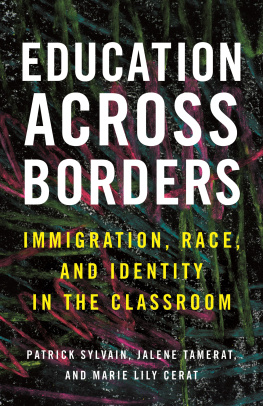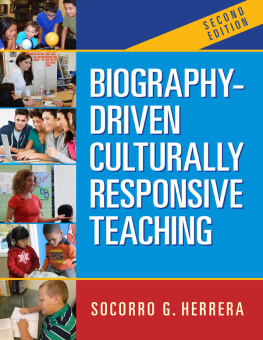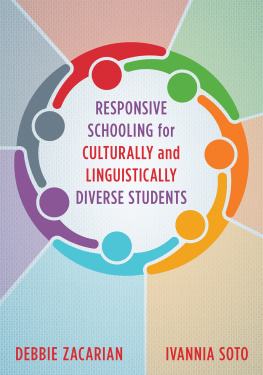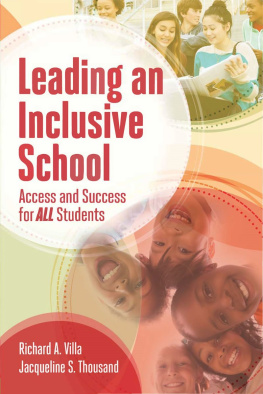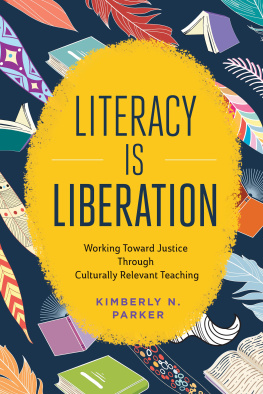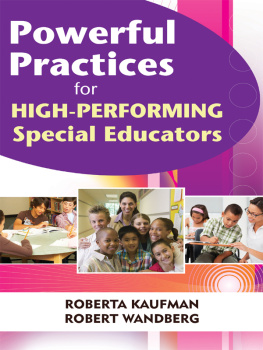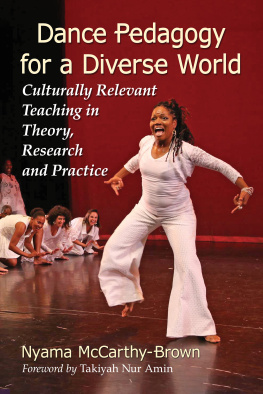Contents
Pagebreaks of the print version
Guide
PRAISE FOR EDUCATION ACROSS BORDERS
Education Across Borders is a powerful cri de coeur, appeal, study, and manifesto from three fervently passionate, highly empathetic, and experienced educators who are transforming K12 education for BIPOC and first-generation students, particularly from Haiti and the Dominican Republic. This book is a must-have for school administrators, teachers, and lawmakers, as well as parents and general readers. It is the kind of book that belongs in every classroom, as it could help safeguard young peoples futures and even save their lives.
EDWIDGE DANTICAT
author of Brother, Im Dying
Education Across Borders fiercely advocates that teachers of Haitian, Dominican, and other students with immigrant backgroundswhose language and cultural needs are largely neglected in classroomsmust do better. Sylvain, Tamerat, and Cerats collective years of teaching and research, and depth of theoretical knowledge, provide important insight for ensuring both academic success and positive socio-emotional development for students learning English. This book is for all who are deeply committed to the success of language-minority students and are willing to passionately advocate for it. As such, it should serve as a resource for every educator who teaches these students.
AUDRA M . WATSON
director, WW Teaching Fellowship, Institute for Citizens & Scholars
Education Across Borders is a marvelous gift. Brilliantly distilling an innovative pedagogical framework that allows teachers to center the needs of immigrant students, especially Haitians and Dominicans, in ways that are truly profound and revelatory. A must-read for all educators interested in transforming anti-racist theory into everyday classroom practice.
PENIEL E . JOSEPH
author of The Sword and the Shield: The Revolutionary Lives of Malcolm X and Martin Luther King Jr.
The four extended essays in this compelling book provide inspirational and pragmatic strategies to empower educators to turn their classrooms into spaces for transformative learning for their Haitian and Dominican students. A rallying cry recommended for all who care to connect their students to schools as sites of possibility.
CAROLA SUREZ - OROZCO
cofounder, Re-Imagining Migration, and Distinguished Professor, University of Massachusetts, Boston

Chapter 1
MY EDUCATIONAL WORLD
Democratic Pedagogy and Engaged Citizenry
Patrick Sylvain
D espite its nondemocratic society and underdeveloped institutions, Haiti has seen some great scholars and successful individuals graduate from various schools throughout the country, many of whom eventually went on to study abroad. Nonetheless, the educational curricula in Haiti were not engineered to meet the demands of the people they were meant to serve. Schools, in a traditional sense, have been institutional establishments where children grow and learn prescribed sets of instructions that are meant to measure accomplishments and mastery of skills. Such pedagogical modality, or conservative philosophy of education, is what John Dewey advocated against when he wrote:
Since the subject-matter as well as the standards of proper conduct are handed down from the past, the attitude of pupils must, upon the whole, be one of docility, receptivity, and obedience. Books, especially textbooks, are the chief representatives of the lore and wisdom of the past, while teachers are the organs through which pupils are brought into effective connection with the material. Teachers are the agents through which knowledge and skills are communicated and rules of conduct enforced.
This was the kind of educational world I experienced in Haiti, and the kind of education my Haitian students as well as the other international students I have taught were exposed to. The uneven and stratified nature of the Haitian society never provided equality of opportunity. Education, the supposedly great equalizer, was a societal divergence. Another wedge to further expose the contradictions within the society. To a large extent, conservatively educated Haitians became ostensibly French, despite living in a place the French despised. The encounter of a democratic classroom in the United States was a shocking revolution. As Carola and Marcelo Surez-Orozco indicate in their coauthored book Children of Immigration, classrooms in the United States are dominated, however superficially, by an ethos of egalitarianism and democracy. The immigrant child may initially come to experience the new social pace and structure as disorienting. As in all revolutions, there are side effects. In my experience, students who have depended on and needed the regimented structure have had difficulty functioning in the seemingly democratic environment where educational punishments were not physical but rather bureaucratic, and this eventually created structural pitfalls. It took me a while to understand a large part of the American educational system, and then to eventually try to navigate my students away from the institutional pitfalls given my background and experiences.
Throughout the world, the fundamental goal of education is to teach students a certain predicted skill set that is aligned with a national curriculum, or regional/district goals. Within these fundamental goals for education, what differ are: (1) the content; (2) the pedagogical approaches/methods; (3) who the society considers worthy to educate; and (4) the ways in which a particular society views children and their capacities. As USbased educators, we know that learning is constant, but what matters is the type of learning and the context in which that learning takes place. In the conventional learning context, the classroom, the relationships between teachers, students, content, and culture/community are key to understanding the dynamics of knowledge production.
In the context of American urban schools, which many immigrant students attend, notions of safety, achievement, and sometimes empowerment are central to the prospect of undoing centuries of denying access to education. In the Caribbean, in the time before independence for most of the countries, having an education was to have a privileged access to social mobility. Education was, and still is, among the institutions that best symbolize transcendence. Therefore, a schooland more particularly a classroomis never regarded as a site for feeling good emotionally; rather, it is a site of strict knowledge production in order to attain an economic goal.
In the context of the Wests conception of modern and progressive education, Jonathan Cohen reminds us of the history of the movement and situates the child at its center. He writes:
The notion that we can and need to understand the whole child, including social and emotional functioning, was proposed and implemented in classrooms during the early part of the century by John Dewey, Felix Adler, and Maria Montessori. These pioneers of progressive education were soon joined by a growing number of students/teachers such as Anna Freud (who was first a teacher), Rudolf Steiner, and many others in Europe and the United States, all of whom sought to make educational curricula more relevant to the childs social and emotional experience. Progressive educators held that, optimally, we need to pay attention to

